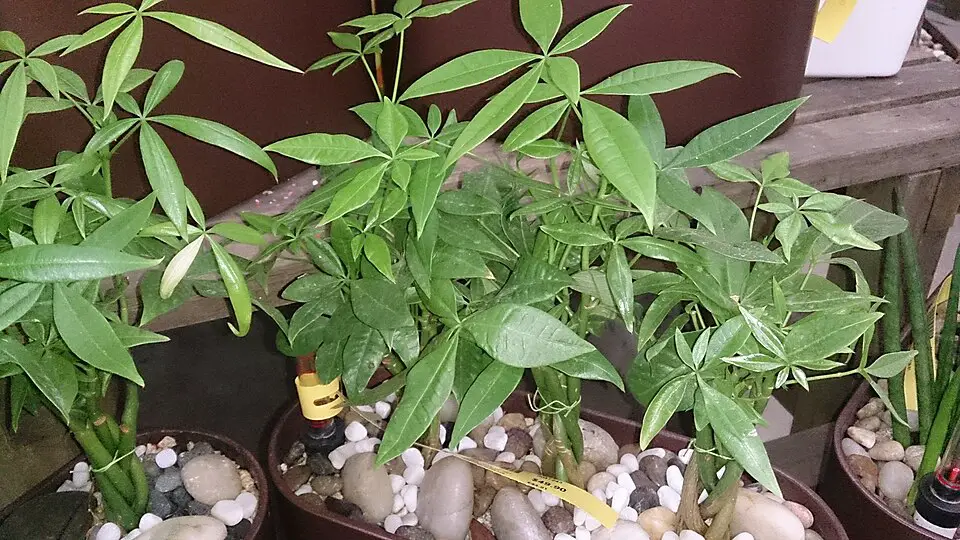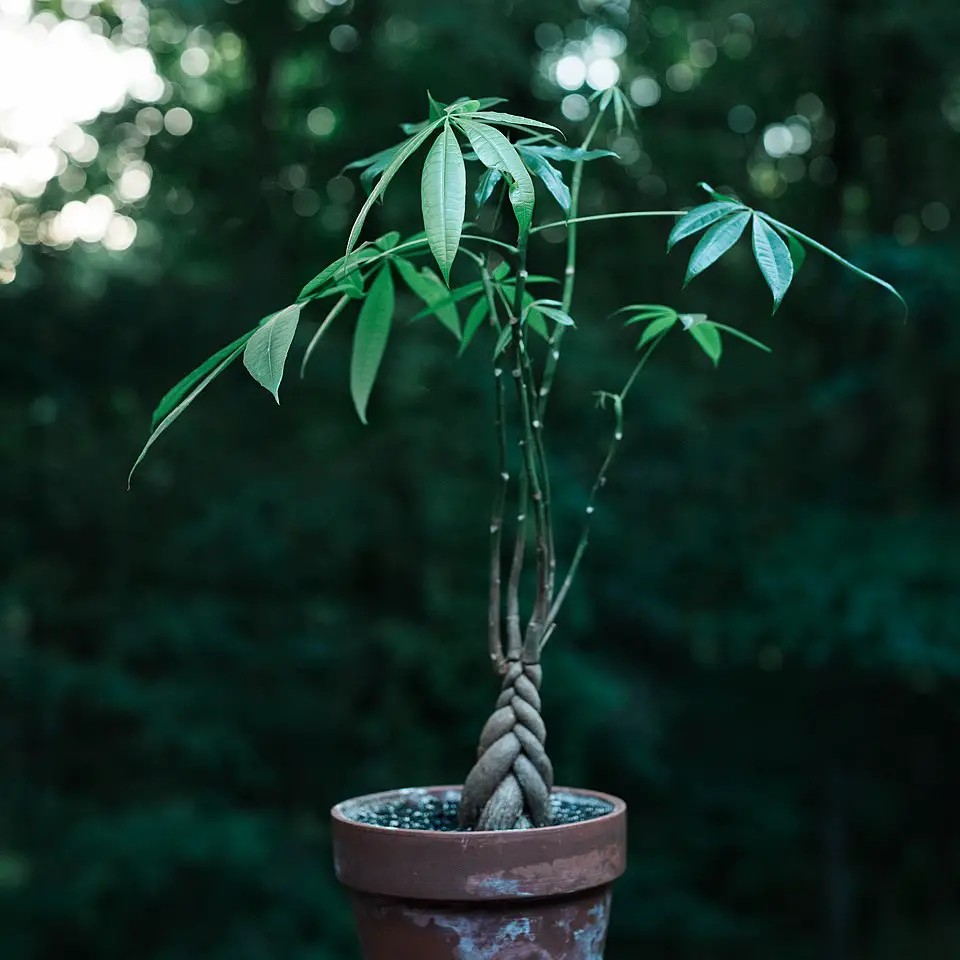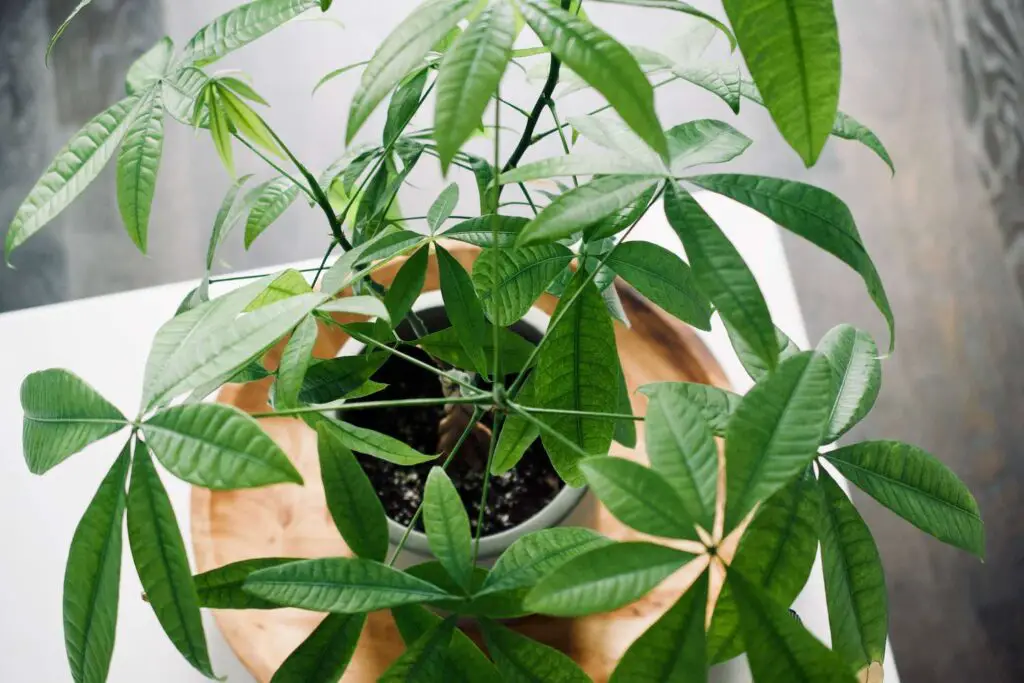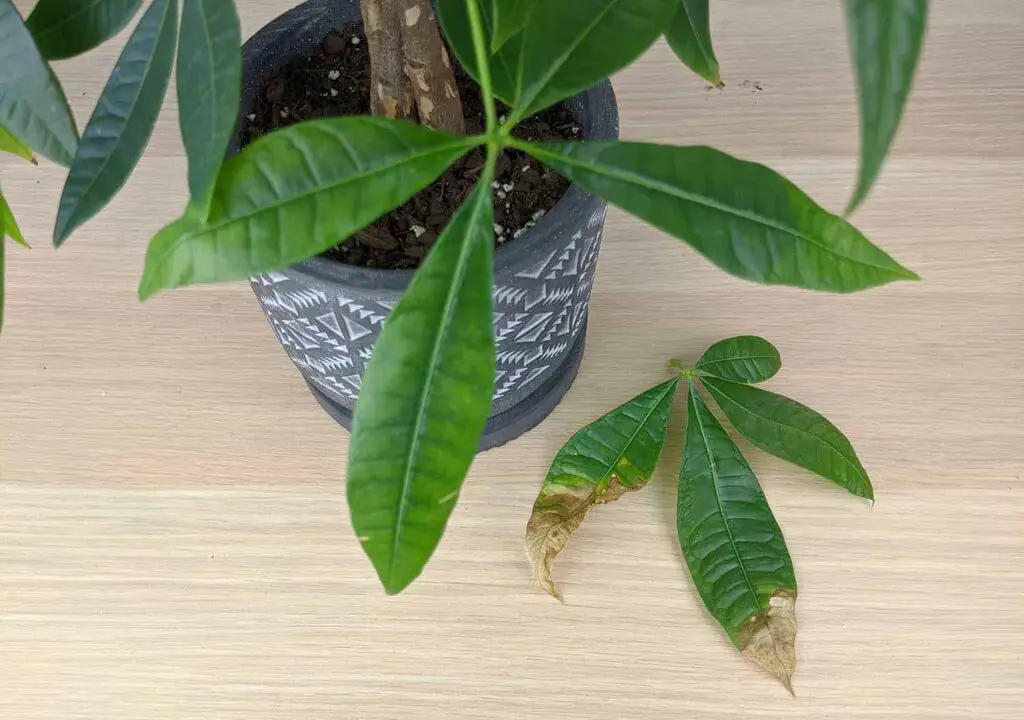The best pot size for a Money Tree (Pachira aquatica) is typically 10 to 12 inches in diameter. This size provides ample space for root growth while ensuring stability and preventing overwatering, which can lead to root rot.
Understanding the Money Tree
The Money Tree is a popular houseplant known for its lush green leaves and braided trunk. It is often associated with good fortune and prosperity. Native to Central and South America, this plant thrives in warm, humid environments. Understanding its growth requirements is crucial for keeping it healthy and vibrant.

One of the key factors influencing the health of a Money Tree is the pot size. Choosing the right pot size contributes to optimal growth and stability. A pot that is too small can restrict root development, while a pot that is too large may hold excess moisture, leading to problems like root rot. Thus, selecting the appropriate pot size is essential for nurturing your Money Tree.
Factors Influencing Pot Size
When determining the best pot size for your Money Tree, several factors should be considered:
- Current Plant Size: The size of your Money Tree will dictate the initial pot size. Younger plants can thrive in smaller pots, while mature plants need larger ones.
- Root System: A healthy root system requires sufficient space. If roots are tightly bound or growing out of drainage holes, it may be time to repot into a larger container.
- Growth Rate: Money Trees can grow rapidly under optimal conditions. Selecting a pot that accommodates future growth can minimize frequent repotting.
- Soil Type: The type of soil you choose can also affect water retention. Well-draining soil in a properly sized pot can help prevent waterlogging.
Recommended Pot Sizes
Here are some recommended pot sizes based on the age and size of your Money Tree:

| Plant Age | Pot Size (Diameter) | Notes |
|---|---|---|
| Seedling | 4-6 inches | A small pot allows for initial root development. |
| Young Plant (1-2 years) | 6-8 inches | Provides room for growth without overwhelming the roots. |
| Mature Plant (3+ years) | 10-12 inches | A larger pot supports further growth and stability. |
When choosing a pot, consider materials as well. Clay pots are porous and allow moisture to evaporate, which can help prevent overwatering. Plastic pots are lightweight and retain moisture longer but may require careful monitoring of water levels.
Signs of an Inappropriate Pot Size
Recognizing signs that your Money Tree may be in an inappropriate pot size is important for maintaining its health. Here are some indicators to watch for:
- Root Bound: Roots growing out of the bottom of the pot indicate that it is time to repot.
- Stunted Growth: If your plant’s growth has slowed significantly, it may not have enough space to develop.
- Water Issues: If the soil retains too much or too little moisture, it could be due to incorrect pot size.
By monitoring your Money Tree’s condition and considering these factors, you can select the best pot size to promote healthy growth and stability. Establishing a routine of checking on your plant will help ensure it thrives in its environment.

Choosing the Right Material for Pots
The material of the pot is just as important as its size. Different materials provide various benefits and drawbacks that can impact the growth and health of your Money Tree. Here are some common pot materials and their characteristics:
- Clay Pots: These pots are porous and allow air and moisture to flow through, which helps prevent root rot. They also tend to be heavier, providing stability to taller plants.
- Plastic Pots: Lightweight and affordable, plastic pots retain moisture longer than clay pots. However, they may lead to overwatering if not monitored closely.
- Ceramic Pots: Often decorative, ceramic pots can be glazed for a more polished look. They provide good insulation for roots but can be heavy.
- Fabric Pots: These breathable pots promote healthier root systems by allowing air circulation. They are lightweight and can help in regulating temperature and moisture levels.
Drainage: A Crucial Factor
Regardless of the pot material, ensuring proper drainage is essential for your Money Tree’s health. Without adequate drainage, water can accumulate at the bottom, leading to root rot and other issues. Here are some tips for ensuring good drainage:
- Drainage Holes: Always choose pots with drainage holes at the bottom. This allows excess water to escape, preventing waterlogged soil.
- Pot Feet: Consider using pot feet or risers to elevate the pot slightly above the surface. This enhances airflow and drainage.
- Layering: When repotting, add a layer of small rocks or gravel at the bottom of the pot before adding soil. This helps facilitate drainage.
Repotting Your Money Tree
Repotting your Money Tree is a vital part of its care routine. As the plant grows, it will need more space for its roots. Here are some steps to follow when repotting:
- Choose the Right Time: The best time to repot is during the spring or early summer when the plant is actively growing.
- Select a Larger Pot: Choose a pot that is 1-2 inches larger in diameter than the current pot.
- Prepare the New Pot: Add fresh potting soil to the new pot. Make sure it has good drainage properties.
- Remove the Plant: Gently remove the Money Tree from its current pot. Be careful not to damage the roots.
- Inspect Roots: Check the roots for any signs of rot or disease. Trim any unhealthy roots using sterilized scissors.
- Place in New Pot: Position the plant in the center of the new pot and fill in with soil, ensuring it is planted at the same depth as before.
- Water Thoroughly: After repotting, water the plant thoroughly to help settle the soil around the roots.
After repotting, it is normal for your Money Tree to experience some transplant shock. During this period, monitor its water needs closely and avoid direct sunlight until it acclimates to its new environment.

Caring for Your Money Tree Post-Repotting
Once you have successfully repotted your Money Tree, proper care will ensure it thrives in its new pot. Here are some essential care tips:
- Watering: Allow the top inch of soil to dry out between waterings. Overwatering is a common mistake that can harm your plant.
- Light Conditions: Place your Money Tree in bright, indirect sunlight. Too much direct sunlight can scorch its leaves.
- Humidity Levels: Money Trees prefer high humidity levels. If your home is dry, consider placing a humidifier nearby or misting the leaves occasionally.
- Fertilizing: Feed your Money Tree with a balanced liquid fertilizer every month during the growing season for optimal growth.
Caring for your Money Tree after repotting will help it adjust well and continue to grow strong and healthy. Being attentive to its needs will ensure that you enjoy its beauty and benefits for years to come.
Common Problems and Solutions for Money Trees
Despite providing the right pot size and care, Money Trees may still face certain issues. Identifying and addressing these problems promptly can help ensure your plant remains healthy and vibrant. Here are some common problems associated with Money Trees:
1. Yellowing Leaves
Yellowing leaves can indicate several issues, including overwatering, nutrient deficiencies, or inadequate light. Here are some steps to take:
- Overwatering: Check the soil moisture. If the soil is consistently wet, reduce watering frequency.
- Nutrient Deficiency: If the soil lacks nutrients, consider using a balanced fertilizer to replenish essential elements.
- Inadequate Light: Ensure the plant is receiving sufficient bright, indirect light. Move it closer to a window if necessary.
2. Leaf Drop
Leaf drop can be a sign of stress in your Money Tree. This can occur due to sudden changes in environment, such as temperature fluctuations or drafts. Here are some solutions:
- Maintain Consistent Temperature: Keep your Money Tree in an area with stable temperatures, ideally between 65°F and 80°F.
- Avoid Drafts: Place your plant away from doors, windows, or air conditioning vents that could cause sudden temperature changes.
- Gradual Changes: When moving the plant to a new location, do so gradually to help it acclimate.
3. Root Rot
Root rot is a serious issue primarily caused by overwatering. Signs include a foul smell from the soil and mushy roots. Here’s how to tackle root rot:
- Inspect Roots: Remove the plant from its pot and inspect the roots. Healthy roots are firm and white, while rotted roots are brown and mushy.
- Trim Damaged Roots: Use sterilized scissors to trim away any rotten roots.
- Repot in Fresh Soil: Replant the Money Tree in fresh, well-draining soil and a clean pot.
- Adjust Watering Schedule: Allow the soil to dry out more between waterings to prevent future occurrences.
Best Practices for Long-Term Health
To
ensure your Money Tree remains healthy and continues to thrive over time, it is essential to adopt best practices in its care routine. Below are some recommendations:
- Regular Pruning: Prune your Money Tree periodically to remove any dead or yellowing leaves. This encourages new growth and keeps the plant looking tidy.
- Pest Management: Keep an eye out for common pests like spider mites and mealybugs. Use insecticidal soap or neem oil to treat infestations promptly.
- Rotate the Plant: Rotating your Money Tree every few weeks ensures even light exposure, promoting balanced growth.
- Seasonal Care: Adjust care based on the seasons. During winter, reduce watering as the plant’s growth slows down.
Environmental Considerations
The environment in which your Money Tree is placed significantly impacts its growth and health. Here are some factors to consider for optimal placement:
1. Light Exposure
Your Money Tree thrives in bright, indirect sunlight. Here are tips for ensuring adequate light exposure:
- Avoid Direct Sunlight: Direct sunlight can scorch the leaves, so place your plant near a window with filtered light.
- Monitor Light Levels: If the leaves start to yellow or drop, it may be an indication of too little or too much light.
2. Humidity Levels
Money Trees prefer high humidity levels. If your environment is dry, consider these options:
- Misting: Mist the leaves with water regularly to increase humidity around the plant.
- Humidity Trays: Place a tray filled with water and pebbles under the pot to create a humid microclimate.
By addressing common issues and following best practices for care, you can create an environment where your Money Tree flourishes. Understanding its needs will help you enjoy a robust and beautiful plant for years to come.
Long-Term Growth Considerations
As y
ou continue to care for your Money Tree, there are additional long-term growth considerations that can enhance its vitality and lifespan. By focusing on these aspects, you can ensure that your plant remains healthy and continues to thrive.
1. Seasonal Adjustments
Understanding the seasonal needs of your Money Tree can significantly impact its growth:
- Spring and Summer: During the growing season, increase watering frequency as the plant actively takes up water. You may also want to fertilize more regularly, using a balanced fertilizer to promote growth.
- Fall and Winter: As the plant enters dormancy, reduce watering. The soil should be allowed to dry out more between waterings, as the plant’s growth slows down during these months.
2. Soil Composition
The type of soil you use can greatly affect the health of your Money Tree. A well-draining potting mix is essential. Consider the following options:
- Commercial Potting Mix: Look for a potting mix specifically designed for houseplants, ideally one that includes perlite or pumice for aeration.
- DIY Soil Mix: You can create your own mix by combining equal parts potting soil, perlite, and orchid bark. This mixture provides excellent drainage and aeration.
3. Regular Monitoring
Regular monitoring of your Money Tree will help you catch any issues early. Here are some tips:
- Visual Checks: Regularly inspect the leaves for signs of pests or disease. Healthy leaves should be a vibrant green without spots or discoloration.
- Soil Moisture Checks: Use your finger to check the soil moisture. If it feels dry an inch below the surface, it’s time to water.
- Pest Checks: Routinely check for pests like spider mites and scale insects. If you find any, treat them immediately with appropriate methods.
Final Thoughts
Caring for a Money Tree involves understanding its specific needs related to pot size, material, drainage, light, humidity, and overall maintenance. Selecting the right pot size is critical for promoting healthy root growth and ensuring stability, while choosing an appropriate material can enhance drainage and airflow.
Monitoring your plant’s condition and adjusting care practices seasonally will help maintain a thriving environment. By being attentive to watering needs, light exposure, humidity levels, and pest management, you can foster a healthy Money Tree that grows beautifully over time.
Ultimately, creating a nurturing atmosphere not only enhances the aesthetic appeal of your space but also brings a sense of tranquility and good fortune associated with this beloved houseplant. With proper care and attention, your Money Tree will continue to flourish for many years, adding charm and positivity to your home.
